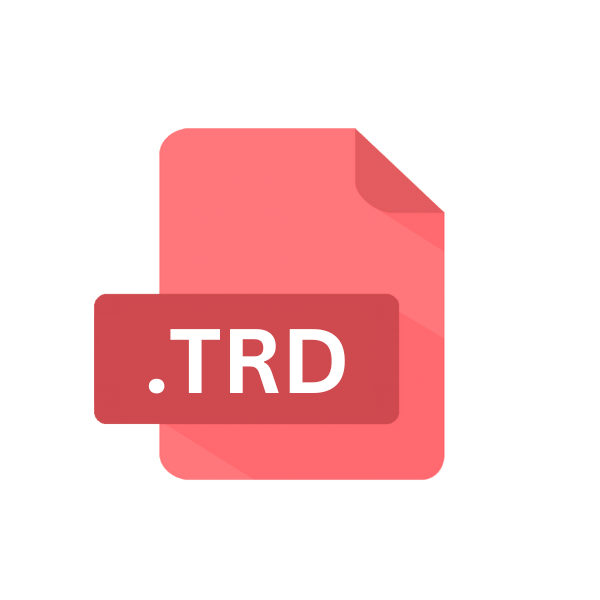.TRD File Extension

TrID Definitions Package
| Developer | TrID |
| Popularity | |
| Category | Data Files |
| Format | .TRD |
| Cross Platform | Update Soon |
What is an TRD file?
.TRD files, short for TrID Definitions, serve as essential components in the realm of file identification. They encapsulate data crucial for TrID, a utility designed for recognizing file types based on their binary signatures.
This article delves into the intricacies of .TRD files, exploring their origin, purpose, structure, technical specifications, advantages, disadvantages, and methods for conversion across various operating systems.
More Information.
.TRD files were conceived to address the growing need for accurate and efficient file identification. Before TrID, users often relied on file extensions or header information, which could be misleading or insufficient for precise identification.
TrID aimed to overcome these limitations by utilizing a comprehensive database of file signatures, making it indispensable for tasks like forensic analysis, data recovery, and software development.
The creation of .TRD files marked a significant milestone in the evolution of TrID, facilitating its adaptability and scalability in the face of evolving file formats and technologies.
Origin Of This File.
The genesis of .TRD files can be traced back to the development of TrID, a pioneering tool created by Marco Pontello in 2003. TrID revolutionized file identification by employing a database of binary signatures unique to each file type.
To accommodate new file formats and updates, TrID required a systematic approach to storing and managing these signatures.
Thus, .TRD files emerged as containers for these definitions, providing a structured repository for TrID to reference during file analysis.
File Structure Technical Specification.
.TRD files follow a structured format optimized for efficient storage and retrieval of file signatures. Typically, they consist of a header section containing metadata such as version information, followed by a series of records, each representing a unique file type.
Each record includes essential attributes like the file extension, description, and a hexadecimal signature pattern specific to that file type.
Additionally, .TRD files may incorporate features for indexing, compression, or encryption, enhancing their functionality and security.
How to Convert the File?
To convert .TRD files for use across different platforms, follow these steps. On Windows, install TrID, place the .TRD file in the TrID directory, and load custom definitions.
In Linux, copy the .TRD file to the TrID installation folder and execute TrID in the terminal with the .TRD file path. For macOS, install TrID, move the .TRD file to the TrID directory, and run TrID via Terminal with the .TRD file specified.
On Android, use a compatible file identification app, import the .TRD file, and configure settings. Likewise, on iOS, install an app supporting custom definitions, import the .TRD file, and adjust preferences.
For other platforms, refer to specific tool documentation for importing custom definitions and selecting the .TRD file.
Advantages And Disadvantages.
Advantage:
- Comprehensive File Identification: .TRD files enable TrID to accurately identify a wide range of file types, including obscure or proprietary formats, enhancing data analysis and interpretation.
- Flexibility and Customization: Users can create and modify .TRD files to tailor TrID’s capabilities to their specific needs, accommodating new file formats or refining existing signatures.
- Efficiency and Performance: By offloading file signature storage to .TRD files, TrID operates more efficiently, minimizing resource usage and accelerating the identification process.
- Community Collaboration: The open-source nature of TrID and .TRD files fosters collaboration among developers, researchers, and enthusiasts, enriching the database and improving overall accuracy.
Disadvantage:
- Dependency on External Files: TrID’s reliance on .TRD files for signature data introduces a degree of dependency and complexity, requiring users to manage and update these files regularly.
- Limited Scalability: While .TRD files offer scalability to accommodate new file types, maintaining a comprehensive database requires continuous effort and vigilance, posing challenges for large-scale deployments or rapidly evolving environments.
- Compatibility Issues: In some cases, compatibility issues may arise between .TRD files and specific versions of TrID or operating systems, necessitating updates or modifications to ensure seamless functionality.
How to Open TRD?
Open In Windows
- Download and install TrID on your Windows system.
- Place the .TRD file in the TrID directory.
- Run TrID and select the option to load custom definitions.
- Choose the .TRD file from the directory and click ‘Open.’
- TrID will now utilize the custom definitions from the .TRD file for file identification.
Open In Linux
- Install TrID using your distribution’s package manager.
- Copy the .TRD file to the TrID installation directory.
- Launch TrID from the terminal and specify the path to the .TRD file.
- TrID will incorporate the custom definitions for file identification on Linux.
Open In MAC
- Obtain TrID and install it on your macOS system.
- Place the .TRD file in the designated TrID directory.
- Open Terminal and navigate to the TrID installation directory.
- Execute TrID with the appropriate command-line options to load the .TRD file.
- TrID will now utilize the custom definitions for file identification on macOS.
Open In Android
- Install a compatible file identification app from the Google Play Store.
- Transfer the .TRD file to your Android device.
- Launch the file identification app and navigate to its settings or preferences.
- Locate the option to import custom definitions and select the .TRD file.
- The app will now incorporate the custom definitions for file identification on Android.
Open In IOS
- Install a file identification app from the App Store that supports custom definitions.
- Transfer the .TRD file to your iOS device using a file management tool or cloud storage service.
- Launch the file identification app and access its settings or preferences.
- Locate the option to import custom definitions and choose the .TRD file.
- The app will now utilize the custom definitions for file identification on iOS.
Open in Others
- Consult the documentation or support resources of your preferred file identification tool.
- Follow the instructions provided for importing custom definitions or extensions.
- Select the .TRD file when prompted, and the tool will integrate the custom definitions accordingly.













